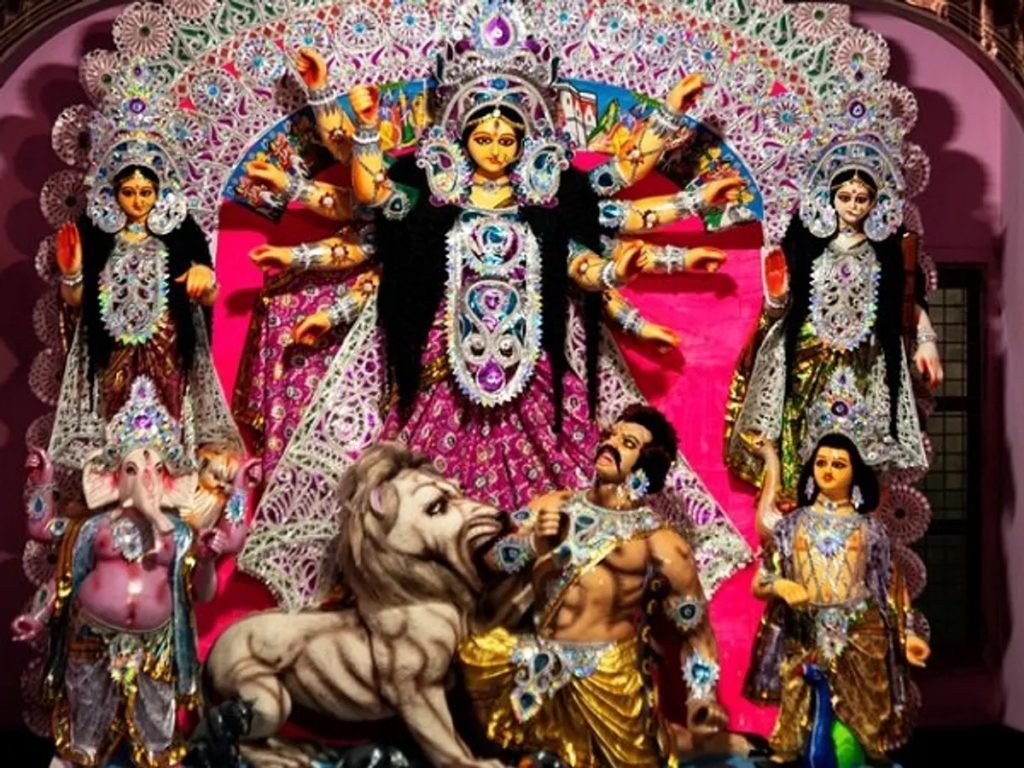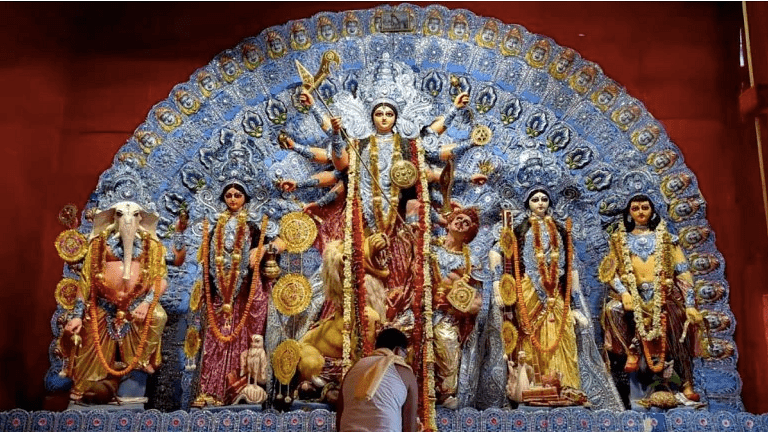UNESCO on Wednesday accorded heritage status to Kolkata’s Durga Puja festival. “Durga Puja in Kolkata has been inscribed in the Intangible Heritage List. Congratulations to India,” the organization said in a tweet, attaching a picture of the goddess with the hashtag #livingheritage.

A statement issued by the Government of West Bengal said, “The 16th Committee of UNESCO for the Protection of Intangible Cultural Heritage (ICH) in its meeting held on 15th December 2021 in Paris, declared Durga Puja in Kolkata on the Representative List of Intangible Cultural Heritage.” Inscribed in. (ICH) of Humanity.”
What is Durga Puja?
Durga Puja, also known as Durgotsav or Sharodotsav, is an annual Hindu festival of West Bengal where people pay homage to the Hindu goddess Durga. It is the biggest religious festival in Bengal and is celebrated to mark the victory of Durga over Mahishasura (the buffalo demon). The city of Kolkata is the epicenter of the festival, where more than 3,000 community Durga Pujas are held during the 10-day festival, excluding the large number of Pujas performed in Bengali households.
The puja is also celebrated by Bengali communities living in other states, notably Tripura, Bihar, Jharkhand, Odisha, Assam, Maharashtra, Delhi, Uttar Pradesh and neighboring Bangladesh.
Since 2016, the Mamata Banerjee government in the state has been organizing Durga Puja Carnival on Red Road to attract global attention to the festival and boost the tourism sector. In this carnival, popular Durga Puja processions from Kolkata and adjoining districts are organized with colorful tableaux.
The parade of Durga idols is accompanied by cultural programs that showcase various art and dance forms. In 2019, the central government nominated Kolkata’s Durga Puja for the 2020 UNESCO Representative List of Intangible Cultural Heritage of Humanity.
What is ‘Intangible Cultural Heritage’?
According to unesco.org, “cultural heritage does not end at the collection of monuments and objects. It also includes traditions or living expressions inherited from our ancestors and passed on to our descendants, such as oral traditions, performances.” arts, social practices, rituals, festive events, knowledge and practices relating to nature and the universe or the knowledge and skill to produce traditional crafts.”
The Representative List of the Intangible Cultural Heritage of Humanity currently contains 492 elements. With the inclusion of Durga Puja, a total of 13 Intangible Cultural Heritage Elements of India have now been inscribed in the Representative List of UNESCO.
Other elements of India that are included in the list:
Koodiyattam: A Sanskrit theater of Kerala; Mudiyet: A ritual theater and dance drama from Kerala; Vedic chants: sacred Hindu texts; Ramlila: Traditional performance of Ramayana; Ramman: A religious festival and ritual theater of Garhwal, Uttarakhand; Kalbelia: Folk Songs and Dances of Rajasthan; Chhau Dance: Classical dance of Odisha and West Bengal; Ladakh Buddhist Mantras: Recitation of Sacred Buddhist Scriptures in Ladakh; Manipuri Sankirtana: A ritual singing, drumming and dance form of Manipur; The traditional brass and copper craft of pot-making among the thathers of Jandiala Guru, Punjab; Yoga: Ancient Indian physical, mental and spiritual practice originating in ancient India; Kumbh Mela: Mass Hindu pilgrimage held at Haridwar in Uttarakhand, Nashik in Maharashtra, Prayagraj in Uttar Pradesh and Ujjain in Madhya Pradesh.

